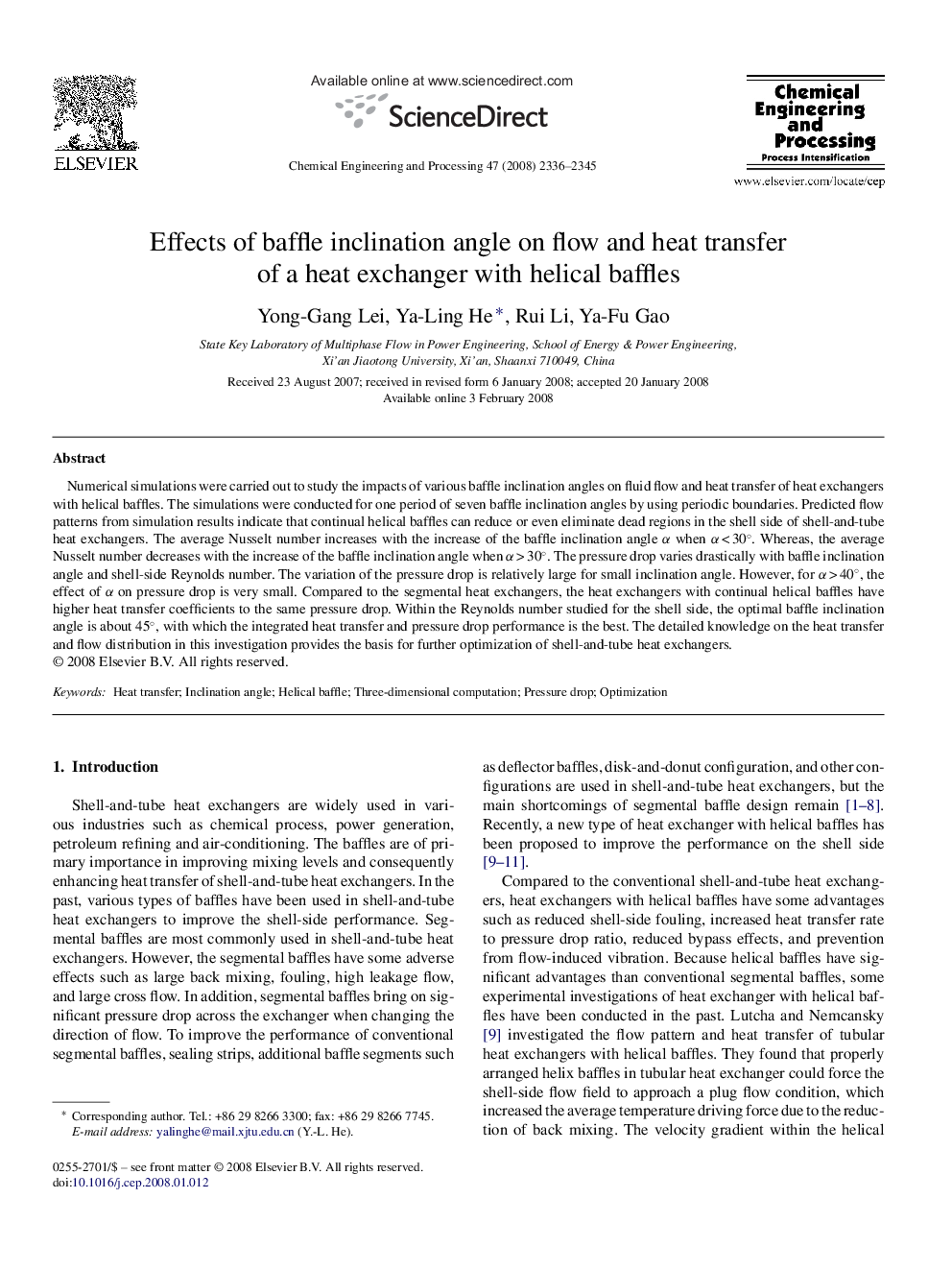| Article ID | Journal | Published Year | Pages | File Type |
|---|---|---|---|---|
| 687590 | Chemical Engineering and Processing: Process Intensification | 2008 | 10 Pages |
Numerical simulations were carried out to study the impacts of various baffle inclination angles on fluid flow and heat transfer of heat exchangers with helical baffles. The simulations were conducted for one period of seven baffle inclination angles by using periodic boundaries. Predicted flow patterns from simulation results indicate that continual helical baffles can reduce or even eliminate dead regions in the shell side of shell-and-tube heat exchangers. The average Nusselt number increases with the increase of the baffle inclination angle α when α < 30°. Whereas, the average Nusselt number decreases with the increase of the baffle inclination angle when α > 30°. The pressure drop varies drastically with baffle inclination angle and shell-side Reynolds number. The variation of the pressure drop is relatively large for small inclination angle. However, for α > 40°, the effect of α on pressure drop is very small. Compared to the segmental heat exchangers, the heat exchangers with continual helical baffles have higher heat transfer coefficients to the same pressure drop. Within the Reynolds number studied for the shell side, the optimal baffle inclination angle is about 45°, with which the integrated heat transfer and pressure drop performance is the best. The detailed knowledge on the heat transfer and flow distribution in this investigation provides the basis for further optimization of shell-and-tube heat exchangers.
